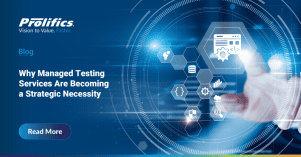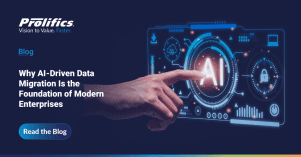During a recent energy and utilities event, industry leaders showcased a shared commitment to creating a brighter future through digital transformation, for 2024 and beyond.
Here’s a snapshot of the top objectives guiding these efforts:
-
AI Integration: Smarter Decision-Making
Who cares? Operations teams, data analysts, and maintenance engineers seeking to optimize operational efficiency and reduce maintenance costs.
Why it matters: With vast amounts of data generated in the industry, AI integration offers a streamlined approach to analyze complex data sets, enabling quicker and more informed decision-making. By leveraging AI algorithms at the grid edge and behind-the-meter, companies can analyze historical maintenance records, weather patterns, and equipment performance data to predict potential failures and optimize maintenance schedules.
Example technology solution types: AI-powered predictive maintenance platforms, machine learning algorithms, IoT sensors for data collection.
-
Wildfire Management: Prioritizing Safety
Who cares? Infrastructure management teams, community outreach coordinators, and environmental scientists aiming to reduce wildfire risks and protect communities.
Why it matters: The increasing threat of wildfires poses significant risks to communities and infrastructure. By prioritizing wildfire management through digital tools, predictive analytics, and IoT sensors, organizations can effectively identify high-risk areas at the distribution level, implement preventive measures, and enhance community safety and resilience.
Example technology solution types: GIS-based wildfire risk mapping tools, IoT sensors for environmental monitoring, community alert systems.
-
Smart Metering for EVs: Keeping Pace with Innovation
Who cares? Grid operators, energy planners, and sustainability managers looking to accommodate the increased electricity demand without compromising reliability.
Why it matters: As electric vehicle usage continues to rise, ensuring the energy grid can handle the increased demand becomes imperative. Smart metering technology offers real-time monitoring and optimization capabilities, allowing providers to efficiently manage energy consumption, balance grid loads, and meet the evolving needs of electric vehicle owners. By implementing smart metering solutions and dynamic pricing schemes, companies can encourage efficient use of electricity, particularly during off-peak charging periods.
Example technology solution types: Smart meters with bidirectional communication, IoT-enabled charging stations, demand response software.
-
Salesforce Integration: Enhancing Customer Engagement
Who cares? Customer service teams, marketing departments, and sales representatives aiming to improve customer satisfaction, loyalty, and overall experience.
Why it matters: Customer engagement plays a crucial role in retaining and attracting customers. Salesforce integration streamlines interactions, enables personalized experiences, and empowers companies to deliver targeted marketing offers and proactive customer support. Leveraging customer data from smart metering systems and electric vehicle charging stations, organizations can tailor recommendations and support initiatives based on individual preferences and behavior, enhancing overall customer experience and loyalty.
Example technology solution types: Salesforce CRM integration, customer data platforms, marketing automation software.
-
Seamless Integration and Testing: Ensuring Reliability
Who cares? IT teams, system integrators, and software developers aiming to reduce system downtime and improve system performance.
Why it matters: Seamless integration and testing are vital for ensuring the reliability and performance of systems and applications. By minimizing disruptions and optimizing efficiency through thorough testing processes, organizations can enhance system reliability, improve end-user experience, and mitigate potential risks and failures. Continuous performance monitoring at the distribution and transmission levels ensures smoother, more consistent performance, leading to increased productivity and satisfaction.
Example technology solution types: Automated testing tools, continuous integration pipelines, performance monitoring software.
-
Capital-Funded Innovation: Driving Growth
Who cares? C-suite executives, innovation teams, and strategic planners seeking to increase market share and drive revenue.
Why it matters: Innovation is key to driving growth and staying ahead of the competition. Allocating capital resources to strategic digital transformation initiatives enables organizations to explore new markets, develop groundbreaking products, and generate revenue streams. By investing in research and development projects and technology partnerships related to smart cities, electric vehicles, and grid-edge technologies, companies can drive innovation, capture market share, and position themselves as industry leaders.
Example technology solution types: Emerging technology pilots, R&D partnerships, venture investments.
About Prolifics
At Prolifics, we know E&U and we’ll help you keep the lights on. As a digital engineering and consulting firm, we work with energy and utility companies on a wide range of issues, providing our clients with inventive, cost-effective solutions. We’ll help you navigate and accelerate your digital transformation journey – and power your success. Visit our Energy & Utilities page to learn more.




